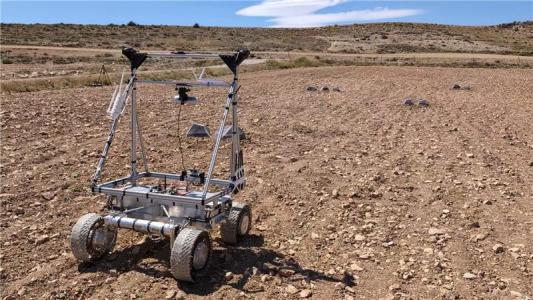De-risk assessment :Multi-range Navigation for Fast Moon Rovers (FASTNAV)

•Achieve increased average traverse speeds (up to 1.0m/s) through the development of a new multi-range and multi-mode rover GNC system which follows a continuous drive paradigm
•Perform an analogue field test campaign in a representative environment to demonstrate the capabilities and establish preliminary performances for the GNC system
Current and future planetary exploration missions are building upon the previous ones to seek out more complex objectives and richer scientific return. These complex scenarios lead to new challenges, with one major challenge being the rover GNC system, which needs to enable fast surface operations to achieve significantly reduced traverse times without any compromise on localisation accuracy or rover safety.
To address these limitations, the European Space Agency (ESA) issued a series of activities on fast autonomous rovers. The first, RAPID, led by GMV Spain established a solid foundation, with a preliminary flight rover breadboard created and the first iteration of the on-board software and GNC system developed. The follow-on FASTNAV activity, supported by the UK Space Agency through the GSTP programme, has recently delivered a number of significant improvements and additional functionalities, establishing the consolidated FASTNAV GNC system and on-board software.
The FASTNAV GNC system is a platform agnostic rover GNC system which supports multi-range and multi-mode rover navigation in a continuous-drive paradigm. The FASTNAV GNC system features two GNC modes: RAPID featuring a Local Optimisation planning strategy, using Fast Marching Method (FMM), and FASTER which is purely reactive, adopting a customised Artificial Potential Fields (APF) obstacle avoidance strategy. Together, vision-based perceptions from a combination of conventional terrain mapping based on stereo processing for short-range obstacles, and a trained obstacle detector, using Machine Learning, which offers far range detections of up to 20m. Thanks to these developments, the FASTNAV GNC system has been successfully demonstrated at achieving sustained average traverse speeds in excess of 1.0m/s in representative analogue field trial conditions.
